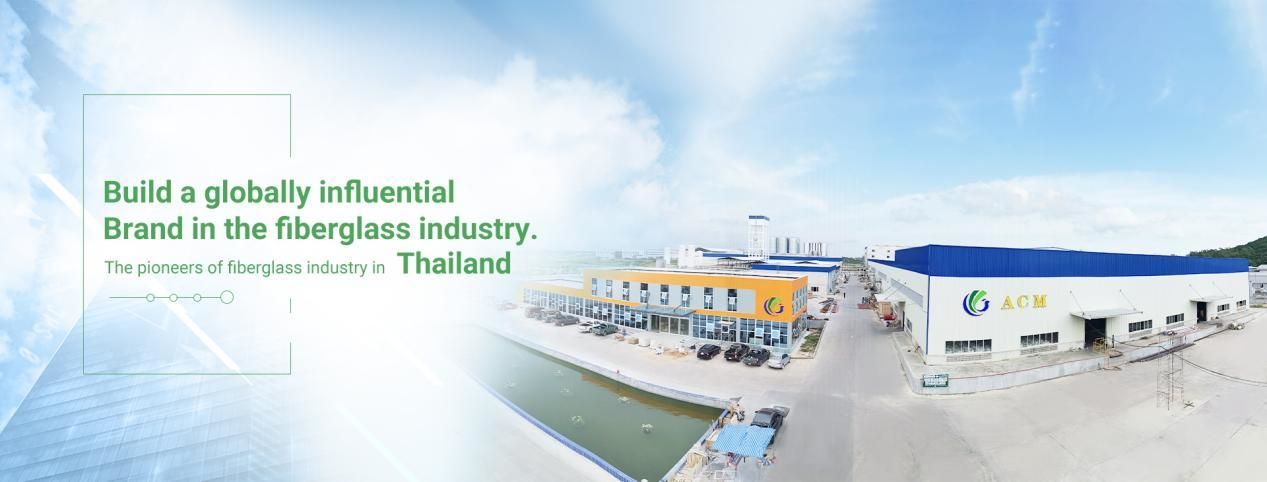Fiberglass, a composite material composed of glass fibers embedded within a resin matrix, has garnered widespread acclaim across diverse industries owing to its distinct attributes and versatile nature. This multifaceted material extends a plethora of benefits to applications involving reinforced materials, yet it also harbors certain limitations that warrant thoughtful contemplation. Let us delve into the merits and drawbacks intrinsic to the utilization of fiberglass within such contexts:

ACM – largest fiberglass manufacture in Thailand
Address: 7/29 Moo4 Tambon Phana Nikhom, Amphoe Nikhom Phatthana, Rayong21180, Thailand
E-mail:yoli@wbo-acm.com
https://www.acmfiberglass.com/
Advantages:
1.Impressive Strength-to-Weight Ratio: Fiberglass composites boast an exceptional ratio of strength to weight, rendering them ideal candidates for scenarios necessitating materials that are simultaneously lightweight and robust. This attribute significantly contributes to heightened fuel efficiency within transportation realms and augments performance benchmarks within aerospace and sporting domains.
2.Resilience Against Corrosion: The corrosion-resistant nature of fiberglass renders it an exemplary choice for deployments within corrosive environments. Industries grappling with chemical processing plants, maritime infrastructures, and intricate pipelines derive substantial benefits from this inherent corrosion resistance.
3.Flexibility in Design: Fiberglass’s inherent flexibility facilitates the facile formation of intricate and elaborate shapes, thereby facilitating the streamlined molding and manufacturing of such configurations. This adaptability proves especially invaluable within sectors wherein innovative design practices hold paramount importance, such as architecture and automotive engineering.
4.Electrical Insulation Prowess: Endowed with exceptional electrical insulating properties, fiberglass emerges as a favored contender within domains like electrical engineering and electronics. Its aptitude for insulating materials employed in wiring and circuitry exemplifies its indispensability within such sectors.
5.Adequate Thermal Insulation: Fiberglass composites showcase commendable thermal insulation characteristics, positioning them as viable candidates for roles necessitating effective temperature control. Be it the domain of building insulation or the design of oven structures, fiberglass’s proficiency in thermal insulation remains evident.
6.Cost-Effective Proposition: The cost-effectiveness of fiberglass materials frequently outshines that of advanced composites like carbon fiber. This affordability renders it a prevalent choice spanning a broad spectrum of applications.
Disadvantages:
1.Inherent Brittleness: Fiberglass’s composition can predispose it to relative brittleness when juxtaposed with materials such as carbon fiber. This brittleness accentuates susceptibility to diminished impact resistance and heightened proneness to cracking under specific conditions.
2.Susceptibility to UV Degradation: The prolonged exposure of fiberglass to sunlight and UV radiation can precipitate its degradation over time. This proclivity may engender a decline in mechanical attributes and potentially yield aesthetic detriments when deployed within outdoor scenarios.
3.Moderate Modulus of Elasticity: Notwithstanding its strength, fiberglass may demonstrate a comparatively lower modulus of elasticity when juxtaposed with substances like carbon fiber. This characteristic has the potential to influence its rigidity and overall performance within high-performance contexts.
3.Environmental Footprint: The manufacturing process of fiberglass entails energy-intensive procedures and the deployment of resins derived from petrochemical sources. Furthermore, the disposal of fiberglass waste could potentially pose ecological challenges.
4.Water Absorption Potential: Fiberglass composites have the propensity to absorb water over time, leading to plausible alterations in dimensions and a reduction in mechanical attributes. This susceptibility could pose concerns in applications exposed to humidity or moisture.
5.Limited Performance Under High Temperatures: Fiberglass composites may display limited efficacy when subjected to exceedingly high temperatures, thereby constraining their suitability for scenarios mandating exceptional heat resistance.
In summation, fiberglass stands as a repository of diverse advantages within the sphere of reinforced materials applications, including its commendable strength-to-weight ratio, resistance to corrosion, design flexibility, and beyond. Nonetheless, it concurrently harbors certain shortcomings encompassing brittleness, vulnerability to UV degradation, and restrictions in high-temperature performance. Accordingly, when electing to employ fiberglass for a specific application, meticulous assessment of its attributes and constraints becomes pivotal in ensuring optimal longevity and performance
Post time: Aug-09-2023




